Jessica Walton is a queer, disabled writer and speaker. They co-wrote an episode of Australian comedy series Get Krack!n that focused on disability, and they are also the author of Introducing Teddy, a picture book illustrated by Dougal MacPherson. Jess’s short stories have been published in Australian anthologies Funny Bones and Meet Me at the Intersection, and their poetry can be found in Growing Up Disabled in Australia and The (Other) F Word: a Celebration of the Fat and Fierce.
Aśka is creative dynamite. She’s an award-winning artist and graphic novelist, an ex-quantum physicist, and a big fan of the little doohickey above the s in her name (which is pronounced “Ash-ka”). A hugely engaging and popular presenter, Aśka is passionate about visual literacy and has published more than ten books and graphic novels. When she’s not creating children’s books, Aśka is traveling across Western Australia as a roving science communicator. Sometimes, she sleeps.
I had the opportunity to interview Jessica and Aśka, which you can read below.
First of all, welcome back to Geeks OUT! Could you tell us a little about yourselves to readers who might not know you yet?
JW: Hi!
I’m a writer, and love trying new kinds of writing. I have co-written one episode of television show Get Krack!n, about disability and ableism, I’ve had poems and short stories published in poems and literary journals, and I’ve collaborated with artists on a picture book and graphic novel so far. I wanted to be a creative writer as a kid and was discouraged from doing that by well-meaning adults, so now I take every opportunity I can to learn new things about creative writing, and try out different forms. It brings me a lot of joy!
What I wish those adults had said is: ‘Study creative writing, but also work on building another career that you can do alongside writing so you’ll be able to achieve all of your dreams and goals in life, because sometimes writing takes a little while to take off!
I work as a casual relief teacher, filling in for teachers who are away, and that helps me find time in my life for writing. I took a few years off from teaching because of chronic pain, but switching from a prosthetic leg to a power wheelchair has allowed me to get back into the classroom one day a week. I love it.
When I’m not working, I’m reading by myself with my cat on my lap, or reading to my two kids! They love graphic novels and funny books most of all.
A: Greetings!
Please note, my name is spelled Aśka and pronounced Ash-ka. 😉
I’m a Visual Storyteller, essentially crafting narratives through pictures. Whether turning a concise 300-word manuscript into a picture book, sketching out illustrations for kids’ magazine plays, or fashioning a 216-page graphic novel out of dialogue alone: I am in the business of weaving magic with images.
In addition to a dozen or so traditionally published titles I’ve been self-publishing comics for a solid 18 years, with the bonus of having a few of my works shortlisted for various awards.
But, living solely off publications is a bit of a tightrope act. So, alongside my artistic endeavors, I spend a considerable chunk of my time enthusiastically presenting at schools and literary events. My spiel revolves around the significance of visual literacy, teaching the language of visuals, and conducting engaging workshops.
Volunteering is another hat I wear, in Perth, Western Australia, where I live and actively contribute to local storytelling communities. Over the years, I’ve been involved in building networks and resources for book and comics creators, kids of all ages, and the general public through various festivals, events, and competitions.
Let’s just say that my journey involves a blend of creativity, advocacy, and a touch of community magic!
As creatives, what drew you to the art of storytelling, particularly graphic novels/comics?
JW: Having kids! I suddenly realised that it wasn’t good enough to just read my kids the classics I had kept from when I was young; I had to move forward and create a library for them that reflected the diversity of the world around them, and the diversity of their own family! They grew up with queer parents, a trans parent and grandma, a disabled parent, aunt, uncle and cousin… I research what titles were out there to fill the gaps in their collection, but I also wrote into that gap.
I also write for myself. The graphic novel I created with Aśka was definitely an example of writing into the gaps in my collection – I wanted a sweet, fun, romantic story about a queer, disabled teenager. It was basically the exact representation I had needed as a young person into literature! It was a very healing process.
Stars in Their Eyes actually started as a short story for the anthology Meet Me At the Intersection, published by Fremantle Press in so-called Australia. It’s a collection of writing by people who are underrepresented in literature. Fremantle Press asked me if I’d like to contribute to that anthology, so I wrote my little story that healed the lack of rep I’d had as a kid. Then, Fremantle Press asked if I’d like to work with Aśka to transform the story into a graphic novel! I’m so lucky to have been able to be a part of that process. I still can hardly believe the book has made it to the USA!
A: As a child, growing up without siblings and surrounded by bookshelves filled with picture-texts, I quickly developed a rich, visual imagination and a hunger to express myself with images. Like most of you here, I have basically forged my connections with the world through drawings and narratives.
Throughout my diverse career paths, I kept on coming back to storytelling. Even during my time in a physics lab, I found myself creating research-relevant cartoons for my thesis. It became evident that the art of storytelling had plans for me.
My mind perceives words and images not as separate entities but as different facets of the same language. I believe the most exhilarating storytelling emerges when we invent ways to blend pictures and text into something ‘in-between.’ So naturally, I have always loved the medium of comics – not only because they provide a natural avenue for my self-expression but also because they serve as a poignant emotional window to new and intricate experiences.
For instance, during the creation of “Stars in Their Eyes,” I began to notice the ways in which the society I’m in acts and speaks to, and about, disabled individuals. This prompted me to make changes in my own behaviour. By presenting Jessica Walton’s story to you in the form of a graphic novel, my aspiration was to extend the opportunity for observation and subsequent change to our readers. After all, I love graphic novels because, through the very unique blend of images, words and layouts, they offer us a front row seat in an ‘experience’. An experience that can connect, touch and instigate change its readers.
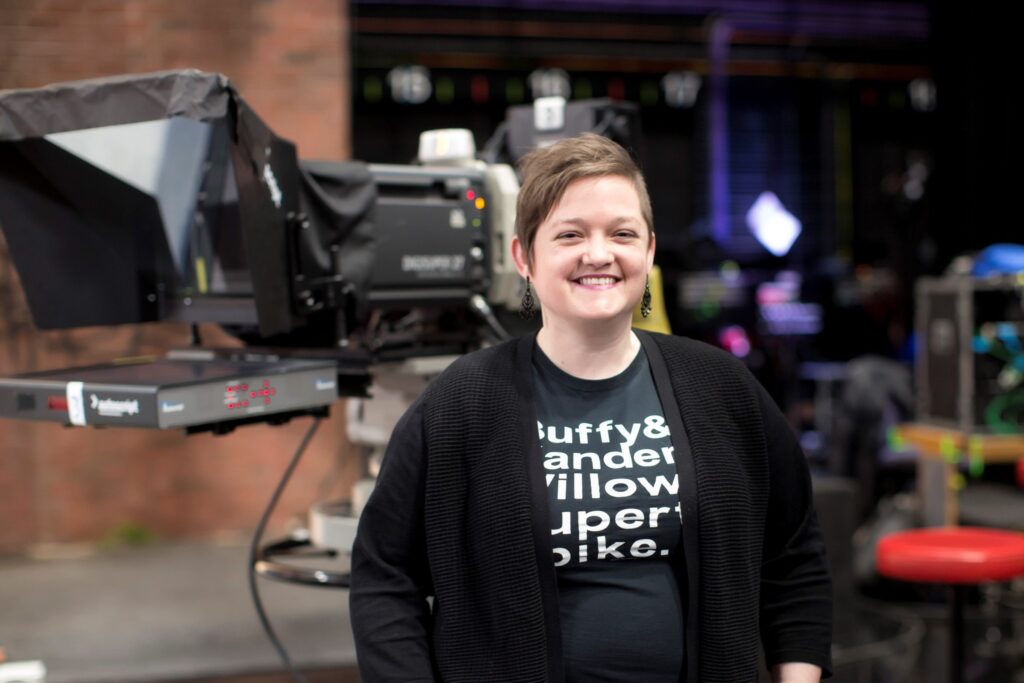
How would you describe your creative process?
JW: I find it quite difficult to write – a combination of chronic pain, ADHD and depression/anxiety kind of interfere with any kind of routine developing in terms of my creativity. I am just grateful when things are working for my brain. Working with others who have a routine or process helps me to make progress in my writing.
I found writing a graphic novel similar to writing for TV – it’s like creating a script, and then giving it to an artist who transforms it into something else entirely: a movie on the page almost. A dance between my words and their art and design. I am in awe of visual artists who can take what I’ve given them and breathe a real magic into it. As a reader of graphic novels, it’s been exciting to see that process, to be a part of it.
A: My creative process unfolds in two distinct stages: the visual planning of the story, followed by the finished artwork.
My brain thinks through the physical act of drawing, so I usually feel my way into the story structure through a process of trial and error. Although I do start with a vague idea, it’s the messy and occasionally frustrating process of ‘making lines’ that guides me toward the final visual narrative. On top of that, I am very impatient, which means that a lot of my early plans and thumbnails are mere scribbles, easy to discard and too abstract to ever be shown in public.
With a pencil or a biro, I’ll rapidly sketch out my preliminary layout ideas, which are then scanned onto the computer. From there, most of the process becomes digital. I iterate over the digital thumbnails countless times, generating numerous printouts on (recycled!) paper. These pages, sometimes hundreds of them, are spread out on the floor of my spare room, creating a tangible space where I pace around, scrutinizing for any big-picture issues that may elude me on the screen.
The distance created by moving from the screen to the page and then to the floor, coupled with time and sleep, enables me to effectively edit my own work. Only when the ‘scaffolding’ is sturdy and the visual pacing of the story is worked out through the thumbnails do I start designing and drawing each panel. This subsequent artwork stage follows a similar iterative process as outlined above.
As a creative, who or what would you say are some of your greatest creative influences and/or sources of inspiration in general?
JW: I had never written a graphic novel before working on Stars in Their Eyes, and as I was adapting it from prose into graphic novel format, I looked at other novels and short stories that had gone through the same process. The one I looked at the most was a favourite of mine, Coraline by Neil Gaiman. I basically crossed out everything in my novel version of Coraline that hadn’t made it into the graphic novel adaptation, which helped me work out their process for adapting Coraline, so that I could apply those lessons to my own story.
A: I grew up reading comics by Tadeusz Baranowski and Andrea Pazienza, whose works regularly broke the ‘fourth wall’ and played with format. As a teen, I explored the realm of 90’s superhero comics, studying the expert ink work and dynamic layouts of artists in that era, despite not being a massive fan of the genre.
However, it was two transformative titles by Dave McKean, namely “Pictures that Tick” and “Cages,” that solidified my belief that comics-making is my true calling. These books captivated me with their exploration of ‘slow comics’ and the enchanting magic of lingering in a moment.
My appreciation for the craft has evolved over time, especially in terms of layout. I draw inspiration from creators who understand the crucial spatial aspect of narrative, such as Rosemary Valero-O’Connell and Chris Ware.
I perceive comics as a continually evolving and expanding medium, and I’m always on the lookout for creators who experiment and push the boundaries of the language of comics, like Eleanor Davies, or who venture into as-yet uncharted territories.
But, my day-to-day creative inspiration and motivation comes from my local, Aussie network of comic makers. The generosity of these remarkable individuals, coupled with our shared experiences and struggles in navigating comic-making in Australia, provides the much-needed push during challenging times.
I absolutely, wholeheartedly encourage you all to keep an eye on the vibrant and innovative world of Australian comics.
What are some of your favorite elements of bringing a book to life? What do you consider some of the most frustrating and/or challenging aspect?
JW: My favourite element was writing dialogue – I enjoyed finding out who my characters were by writing conversations between them, particularly Maisie and her mum. The sense of humour they share is the sense of humour I grew up with and got from my mums. It’s the sense of humour I share with my own kids – they recognised things in the book that I say to them all the time.
The most frustrating element was trying to get my brain to co-operate. The hardest moments were when I had ‘fallen into a hole’ – my term for the moments where depression and anxiety basically lead to a state where I can’t write and can’t communicate. It’s a horrible place to be in because you feel like you’re letting everyone down, but can’t do much about it until your brain lets you crawl back out of the hole.
A: As a visual collaborator engaged in a diverse range of projects, spanning from picture books to graphic novels and comics, I perceive the writer’s raw text, whether it’s prose or dialogue, as a metaphorical ‘door to a story.’ My role then transforms into that of a world-builder, where I craft a ‘universe’ for the reader to explore on the other side of that door. It’s a job I absolutely love and live for.
Being a visual storyteller all-rounder, my responsibilities extend to problem-solving the visual dynamics of a book, making decisions on how the art and words will interact, and planning and creating all the artwork. Often, I take on additional tasks such as choosing fonts, designing layouts, and preparing the final files for the printer.
I deliberately choose not to work with illustration notes or projects designed by others because I relish my creative agency to infuse my unique visual sensibility into a manuscript.
But being a visual storyteller can be frustrating. The main issue is that this job is often seen as secondary. This might have to do with passive language, such as ‘illustrator’, which literally implies copying or decorating of the written text in picture form. Yet, as I’ve summarised above, the work visual creators do is alongside the writer, not subservient to it.
However I do have hope that in the future, as more and more sophisticated graphic novels, adult picture books and image dense texts enter our literature, we will abolish the ‘word over image’ hierarchy, and see picture makers as equal story contributors.
Many creators would say one of the most challenging parts of making a book is finishing one. What strategies would you say helped you accomplish this?
What advice might you have to give for other aspiring writers?
(I’m combining two of their questions here.)
JW: For anyone like me, who feels like they have a ‘bad brain’ – having co-conspirators who know what your challenges are, and can help you get through them and maintain routine, self care, and communication, is really helpful. I have a system to help me when I’m in the hole now; it doesn’t always work, but it works enough times to make things possible. Sometimes.
If you don’t have a co-conspirator, use technology as much as possible. Reminders, alarms – whatever works for you. Sometimes gamifying things works for me, too. Anything involving competition or a reward for writing can help me get my brain into gear so I can work on a project.
More generally, I’d advise young writers to have fun! Don’t get bogged down by the need to create something perfect. Write something with heart, something that you’d love to read yourself, something that makes you smile or feel good… then get it into the hands of someone whose job it is to see the polished gem inside your initial story. Editors are the best people in the world, and they can really help you see where to take your characters and plot; I worked with an incredible editor on the short story version of Stars in Their Eyes, Ambelin Kwaymullina, who encouraged me to keep working on the short story, even when I felt it was no good, and encouraged me to change the ending – I’m so grateful for it because it improved it so much. I then worked with Cate Sutherland at Fremantle Press and then Megan Peace at Scholastic as the editors of the graphic novel versions, who polished it and made it even better. Every editor brought something important to the story.
A: This is a great question. Getting from the cool idea in your head to a finished masterpiece is tricky at any career stage. Here’s my three-step plan:
Create Quick Wins:
Make lots of short projects with tight deadlines, such as regular online posts. This approach will make sure you actually finish something, feel a sense of achievement, and test out a range of ideas.
Share Your Work:
Show your work to others! Whether it’s fellow, aspiring creators, fans of your work, or enthusiasts of the medium. Build a ‘you-shaped’ community by putting your work out there regularly, in person or online.
Feedback is Your BFF:
Listen to, ask for, and give feedback. Learn by watching what others do. This step naturally follows from step 2, so don’t stash your work in that secret desk drawer. Then, just loop back to step 1 and kick off another, more challenging project!
Bottom line?
It’s impossible to understate the value of a community of people who understand your work and can inspire you. It’s a great way to get support, inspiration and the push to deliver your work to the finishing line.
Life is complicated, time is limited and, prioritising your project often seems like a luxury. Join forces with fellow creators who truly get it and: Watch the magic happen!
P.S. Despite social media illusions, creativity takes time, and that’s okay. Keep on creating at your own pace.
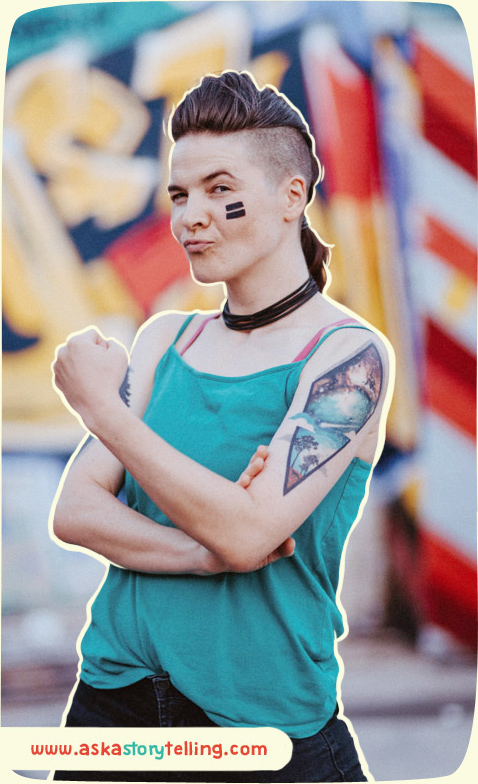
Aside from your work, what are some things you would want others to know about you?
JW: I’d love to take this opportunity to call for a free Palestine. I’d love people to know that I dream of a day where apartheid and genocide ends in Palestine, and young people there can grow up experiencing equality, freedom and peace.
A: In a past life, I was a quantum physicist, turned science communicator with a passion for exploding things. I thrive on heavy metal music, live gigs, carbs, and scaling mountains. Angry-cycling is my preferred mode of transportation and, yes, I plan to make a comic about all of it. Always up for a dance-off, because there’s never a wrong time to dance!
Are there any other projects you are working on and at liberty to speak about?
JW: I’m working on a picture book and a few more graphic novels. I’m also learning Arabic! I fell in love with it at university when I went to an Arabic poetry reading; I ended up choosing it as my major and studying for a semester in Tunisia. I’ve forgotten a lot, so it’s nice to be practising again. I’d love to see Stars in Their Eyes translated into Arabic one day.
A: Currently, I am writing and drawing two graphic novels.
One is a wordless narrative about Australian suburbia, the other is a fun YA about neurodivergence, relationships, and physics. Stay tuned! 😉
Finally, what LGBTQ+ books/authors (and in particular any related to disability) would you recommend to the readers of Geeks OUT?
JW: I’ve just finished reading the graphic novel Bingo Love: Jackpot Edition by Tee Franklin, Jenn St-Onge and Jo San, with Bonus stories by a range of artists and writers. It was an absolute delight – please read it! It was lovely to experience a queer love story that spanned so many decades and included bi rep and disability rep, as well as some truly beautiful moments exploring ageing and sexuality. The bonus stories were fabulous, too – it’s amazing to finish a story thinking, ‘I want more of this feel-good love story’ and then realise… you have it!
Another beautiful graphic novel about queer love that I read recently was Basil and Oregano by Melissa Capriglione, set at a magic culinary school! It’s sweet and romantic, but it also explores inequality in education and the pressure put on young people to succeed academically. I loved that it included gay parents, and queer and trans students and teachers.
A: I am sure your readers are familiar with a lot of these names, but here are some of my current favourites: Emily Carroll, Tillie Walden, Mariko Tamaki (writer; especially her collaborations with Jillian Tamaki and Rosemary Valero-O’Connell), Sarah Winifred Searle and Casey Nowak.

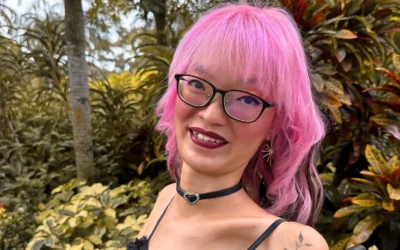
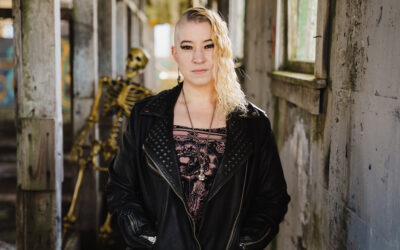

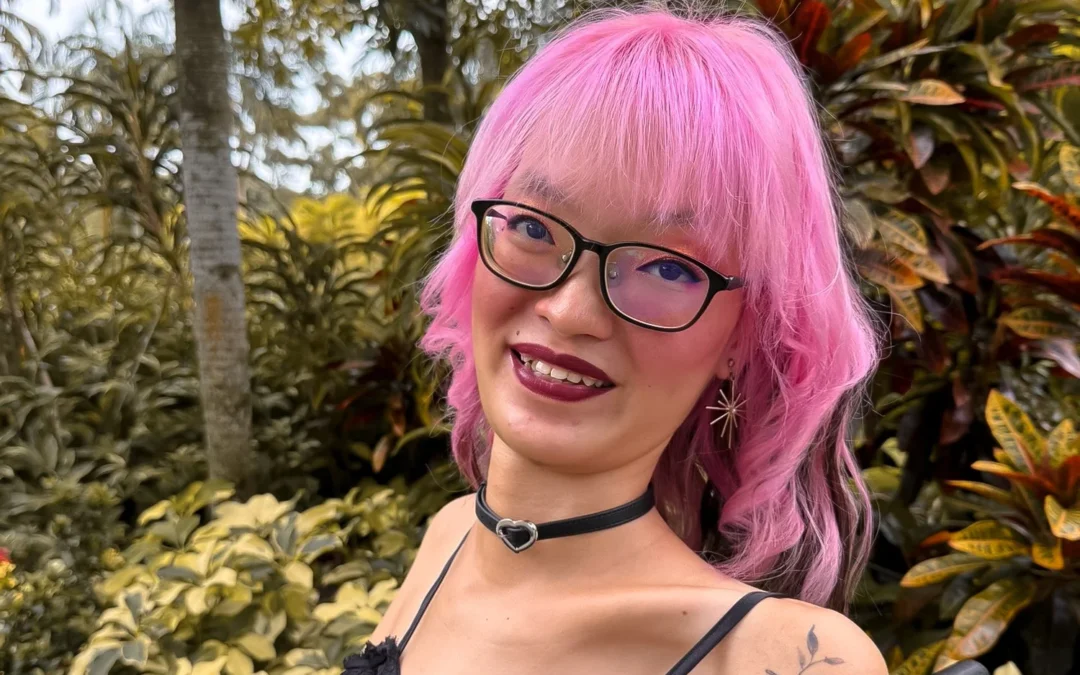
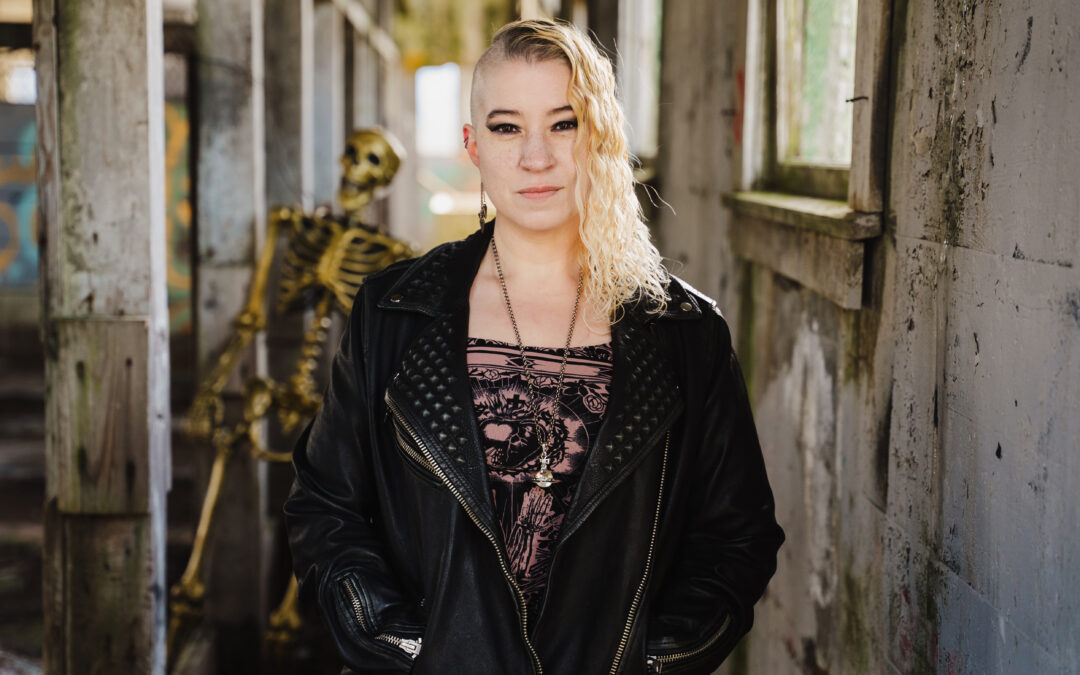

0 Comments